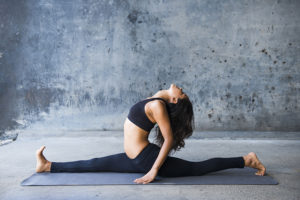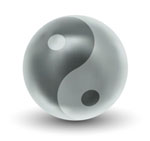“Teachers open the door, but you must enter by yourself.” – Chinese Proverb
 Stretching for the Win – by Susan Tretakis – Most of you are familiar with the story of Pavlov’s experiment with the dog. The definitive example of “classical conditioning”, it is why I can no longer allow myself to watch info-commercials on television at 2 and 3 in the morning. Like Pavlov’s dog, I hear the words, “This price is only available this hour only” and I immediately salivate as I wait on the telephone to place my order.
Stretching for the Win – by Susan Tretakis – Most of you are familiar with the story of Pavlov’s experiment with the dog. The definitive example of “classical conditioning”, it is why I can no longer allow myself to watch info-commercials on television at 2 and 3 in the morning. Like Pavlov’s dog, I hear the words, “This price is only available this hour only” and I immediately salivate as I wait on the telephone to place my order.
It’s absolutely amazing how simple it is to condition me in this way.
Lately though, I am no longer conditioned to buy makeup hand made in the Nevada desert or shampoo guaranteed to grow my hair a minimum of 2 inches a month; in fact, my Pavlovian responses are completely directed at what my TCM doctor suggests I do for my health.
He suggests it – and I do it. There is no bell, no pressure, and no raised voice. There’s just the fact that everything he has told over the past 16 months has been true. I can easily attest to the value of mindful eating, meal rotations, homeopathic remedies, the value of meditation. I cannot say the same for the frying pan that “absolutely nothing will stick to” or the face cream “guaranteed to make me look 15 years younger”.
His latest suggestions – coming shortly after my BFFH (Bathroom Fall From Hell) – were for me to think about physical therapy to strengthen my knees (as in preventing another fall) and to investigate Yoga, to work on my balance and flexibility (as in helping me remain centered, become more flexible and to be more comfortable in my new, lighter body).
It’s because of this first suggestion that I salivated my way to the front desk of my wellness center to sign up for physical therapy and – true to form – in just three weeks I see – and feel – and walk with – a difference. As I shared this success with my TCM doctor, he smiled, congratulated me and then casually asked, have you looked into Yoga yet?
Just as I was getting ready to scream “ENOUGH ALREADY!!!! I’M TIRED!!!!!!” he went on to explain that the practice of Yoga can help me get even more out of acupuncture.
Get more out of acupuncture? How could that be possible? I swallowed my screams – and because I will always salivate when the word “More” is used in the same sentence as “Acupuncture”, I began my search.
I know – and GOOGLE will tell you that – “Acupuncture is a healing modality that can address many physical and emotional issues, as well as mental stress. The acupuncturist works to balance your energy by clearing the meridians, or specific channels.”
But is there a connection between Traditional Chinese Medicine and Yoga?
Melissa Guiterriez writes that “an intelligently designed Yoga practice can help clear out some of the blocked channels allowing your acupuncturist’s work to go deeper without having to pay mind to superficial issues that you could be taking care of yourself.”
Her article explains that by “Connecting to your breath with Yoga helps you align joints and release tension in muscles that will allow the acupuncturist to focus on addressing the root cause of your issue – as opposed to having to spend time on any symptoms that may be a result of an underlying cause.”
Alex Berks details the relationship of Yoga and Acupuncture in an article in Acupuncture.com:
“Yoga has been practiced in the Orient for over 5,000 years. An Indian teacher, Patanjali, compiled and reformulated the yoga philosophy which was handed down from India’s highest age. In his sutras or threads he expounds on the many practices of yoga – spiritual disciplines, meditation techniques – which enable a person to achieve the highest state of man’s evolution oneness with god and ever-new-joy. This “special knowledge” spread across the Himalayas especially with the spread of Buddhism to China. The Chinese were greatly influenced by the knowledge from India and they used the Indian knowledge to enhance their own native practices of Tai Qi and Qi Gong and Taoist Yoga. Both Yoga and Tai Qi and Qi Gong are exercises formatted to increase longevity, open the meridian system and thereby prevent disease.”
Knowing that TCM believes in prevention rather than treating, the pieces fell into place in my mind.
Wikipedia tells us that TCM focuses on “tracing and correcting underlying disharmony, in terms of deficiency and excess, using the complementary and opposing forces of yin and yang to create a balanced flow of qi. Qi is believed to be cultivated and stored in three main Dan Tian energy centers and to travel through the body along twelve main meridians, with numerous smaller branches and tributaries.”
Those of you who have a dog or a cat know they love to stretch; they stretch first thing in the morning, last thing at night and a zillion times during the day. Unfortunately, we humans don’t take the time and we should. The first reason to stretch is that it feels good; hence why our pets tend to do it so often. Naturopaths and chiropractors will tell another reason is that stretching improves flexibility.
 In Mindbodygreen.com the authors write that “an acupuncture point taps into the nervous system and muscular tissues to instigate natural responses in the body. Needles are used to direct these responses into a healing pattern. These points usually lay on an acupuncture “meridian”. These meridians run up and down the body alongside the muscles and tendons and are connected to the muscles they are named after.”
In Mindbodygreen.com the authors write that “an acupuncture point taps into the nervous system and muscular tissues to instigate natural responses in the body. Needles are used to direct these responses into a healing pattern. These points usually lay on an acupuncture “meridian”. These meridians run up and down the body alongside the muscles and tendons and are connected to the muscles they are named after.”
Mindbodygreen goes on to explain that certain yoga poses stretch these meridians out as well. By focusing on certain poses one can reap more health benefits of that meridian stretch. Two examples immediately caught my attention: first, “Yoga’s “Downward Dog” stretches the meridians on your arms and shoulders which provide you with heart and lung health specifically against allergies, cold and flu viruses, anxiety and insomnia.” Second, “Yoga’s Warrior II is an excellent stretch to move lymph, an immune enhancing fluid. Warrior II put an emphasis on the hip and knees, two of our biggest joints. Lymph collects in our joints and has a hard time moving freely if we don’t move about or suffer from arthritis. A healthy lymph flow means a healthy body.”
Online article after article list specific Yoga poses that benefit acupuncture are numerous; obviously, there is much more I can do to make my acupuncture experience better. Acupuncture prevents and treats illness by keeping the meridians open and the qi flowing. Yoga, in a sense, is like a self-massage, preventing these blockages.
My TCM doctor has always presented himself as a “partner” in my health; he could advise on diet and remedies, but it was up to me to make the choices. My “choice” now is to find either a knowledgeable Yoga teacher in my community or in an online course.
And while sometimes I wish my TCM doctor would suggest I spend my days “slugged out” with some good books and a few boxes of Girl Scout cookies, I know those words will never come out of his mouth.
Indeed, I know that right now, such a suggestion has no place in my life.
In my life, right now – thanks to my TCM doctor and TCM – I choose to stretch.
Check out these Resources below to learn more and to start practicing specific poses. Ask your acupuncturist to refer you to a talented yoga teacher in your area.
https://en.wikipedia.org/wiki/Qigong
http://www.acupuncture.com/qigong_tuina/yoga1.htm
https://www.mindbodygreen.com/0-5679/4-Yoga-Poses-That-Pair-Perfectly-with-Acupuncture.html
https://www.huffingtonpost.com/2013/06/17/tai-chi-fitness-chinese-exercise-age-health_n_3452006.html
https://www.medpagetoday.com/meetingcoverage/acr/11475
https://www.thegeniusofflexibility.com/resistance-stretching/yoga-chinese-medicine.html
